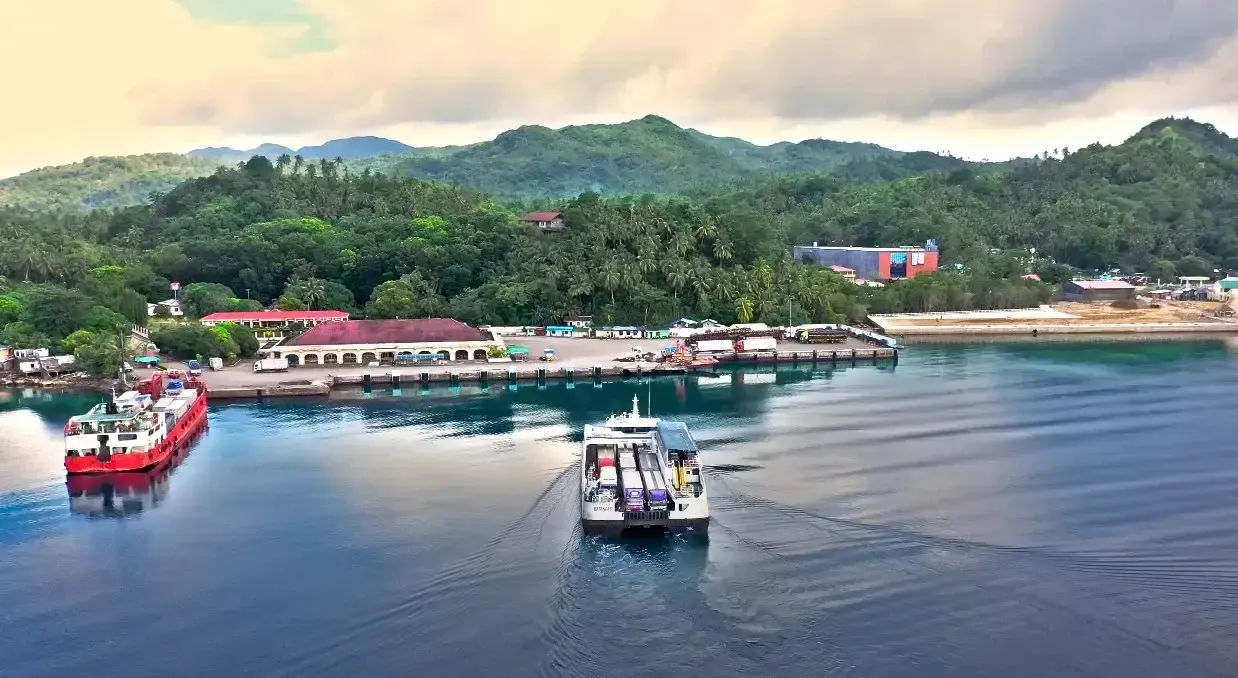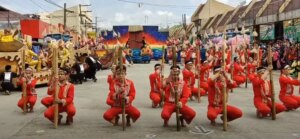
Embark on a captivating journey through time, unveiling the stories hidden within the diverse landscapes of the Philippines. Discover the awe-inspiring Rice Terraces, sculpted by ancient hands, and the resilient walls of Intramuros.
Explore the Tubbataha Reefs and Sagada’s Hanging Coffins, each with their unique historical significance. Delve beyond the surface to gain a deeper understanding and appreciation for the preservation of this rich heritage.
Key Takeaways
- The Philippines boasts a rich cultural heritage, as evidenced by its UNESCO World Heritage Sites like the ancient Rice Terraces and Tubbataha Reefs.
- Intramuros in Manila offers a glimpse into the country’s colonial past, with its well-preserved Spanish-influenced architecture and historical landmarks like Fort Santiago and San Agustin Church.
- The hanging coffins in Sagada provide a unique insight into indigenous burial traditions and serve as a pilgrimage site for those interested in experiencing the local culture.
- The preservation efforts in the Philippines, including church restoration, artifact conservation, and safeguarding ancient pottery and textiles, highlight the country’s commitment to preserving its history and heritage.
The Rice Terraces Legacy
Gazing upon the Rice Terraces of the Philippines, you’re witnessing a breathtaking masterpiece of agricultural ingenuity that has stood the test of time for over 2,000 years. These terraces, carved into the mountains of Ifugao by the ancestors of the indigenous people, are not just a testament to human creativity but a living example of agricultural innovation at its finest. The way water is channeled from the mountain tops through the terraces demonstrates an ancient yet sophisticated irrigation system, highlighting an intimate understanding of their environment.
The terraces’ beauty is matched by their significance, earning them UNESCO recognition as a World Heritage Site. This acknowledgment isn’t just for their visual appeal but for their contribution to understanding the sustainable use of land resources in agriculture. As you explore these verdant steps, you’re treading on paths that have been maintained through generations, a symbol of the community’s resilience and dedication to preserving their cultural heritage.
Visiting the Rice Terraces offers you a unique insight into the Philippines’ rich history and the remarkable continuity of its agricultural practices. It’s a legacy of innovation and persistence that continues to inspire and amaze the world.
Intramuros: Colonial Heritage
Stepping into Intramuros, you’re immediately enveloped by the echoes of a colonial past, where every cobblestone and corner tells a story of conquest, resilience, and transformation. As you wander through its narrow streets, you can’t help but be dazzled by the sheer amount of history packed within these ancient walls. Intramuros, known as the Walled City, stands as a monument to the Philippines’ colonial era, offering a unique blend of Filipino and Spanish influences.
Let’s delve deeper into what makes Intramuros a treasure trove of historical insights:
| Aspect | Description |
|---|---|
| Fort Santiago Insights | A fortress of history, where tales of heroism and sorrow reside. It’s a must-visit for anyone seeking to understand the Philippines’ struggle for independence. |
| Colonial Architecture Exploration | Wander and marvel at buildings that are a testament to Spanish architectural prowess, blending European and tropical elements in harmony. |
| San Agustin Church | A UNESCO World Heritage site, this church stands as a symbol of the enduring faith and resilience of the Filipino people. |
| Casa Manila | Step back in time in this museum, showcasing colonial lifestyle and opulence. |
| Cobbled Streets | Walking these streets, you’re treading the same paths as historical figures, amidst structures that have withstood wars and natural calamities. |
Intramuros is not just a place; it’s a journey through time, offering insights and wonders at every turn.
Tubbataha Reefs Exploration
Diving into the heart of the Sulu Sea, you’ll discover the Tubbataha Reefs, a marine sanctuary renowned for its vibrant biodiversity and breathtaking underwater landscapes. This UNESCO World Heritage site is a paradise for divers and marine biologists alike, offering a unique glimpse into an underwater world brimming with life. As you descend into the clear blue waters, you’ll be greeted by a kaleidoscope of colors – from the soft hues of coral gardens to the bright patterns of tropical fish darting through the water.
The Tubbataha Reefs are not just a diver’s haven but also a prime spot for underwater photography. With your camera in hand, you’ll capture stunning visuals that few places on Earth can provide. Imagine photographing a school of jackfish as they swirl in unison or a solitary sea turtle gliding gracefully by. These moments, frozen in time, showcase the sheer beauty of marine biodiversity.
Exploring Tubbataha allows you to witness firsthand the delicate balance of marine ecosystems. It’s a reminder of the natural treasures our planet holds and the importance of preserving them for future generations. This adventure promises not just awe-inspiring sights but also a deeper appreciation for the world beneath the waves.
Sagada’s Hanging Coffins
From the mesmerizing underwater world of Tubbataha, let’s now journey to the mystical mountains of Sagada, where the ancient tradition of hanging coffins reveals a fascinating cultural heritage. This unique burial practice, deeply rooted in the town’s history, offers an intriguing glimpse into the indigenous cultural rituals that have survived for centuries.
Perched high on the limestone cliffs, these coffins are a testament to the rich and complex spiritual beliefs of the Igorot people. You’ll find that this practice, aimed at bringing the deceased closer to the heavens, is not only a burial method but a profound expression of respect and love for the departed.
As you trek through the verdant landscapes to reach these sites, you’re engaging in a form of adventure tourism that’s both physically rewarding and culturally enlightening. The journey to see the hanging coffins isn’t just a hike; it’s a pilgrimage into the heart of Sagada’s traditions. You’ll leave with a deeper appreciation for the ways different cultures venerate their ancestors and an unforgettable experience of the Philippines’ natural beauty intertwined with its cultural rituals. Sagada’s hanging coffins are truly a sight to behold, bridging the gap between the earthly and the eternal in a profound display of cultural continuity.
Efforts in Philippine Preservation
The Philippines’ commitment to preserving its rich cultural heritage and breathtaking natural landscapes is both a nod to the past and a promise for the future. Amid the hustle of modern life, efforts in church restoration and artifact conservation are quietly unfolding, weaving a tapestry of history that future generations will cherish. Imagine walking through centuries-old churches, their restored facades a testament to the resilience and dedication of those who value the Philippines’ spiritual heritage. It’s a journey through time, where each brick and stained glass window tells a story of faith and endurance.
Artifact conservation, too, plays a crucial role in this preservation saga. Museums and institutions across the archipelago are meticulously caring for pieces of history, from ancient pottery to regal textiles. These artifacts, once on the brink of oblivion, now shine as symbols of the Filipino spirit, thanks to the painstaking efforts of conservators.
As you explore the Philippines, you’re not just witnessing breathtaking views or architectural marvels; you’re stepping into a living museum, safeguarded by a community devoted to keeping its story alive. It’s a powerful reminder that in preservation, there’s not only respect for the past but also hope for the future.
Frequently Asked Questions
What Are the Visa Requirements for Tourists Planning to Visit Historical Sites in the Philippines?
You’ll need to navigate the visa application process before exploring the Philippines’ historical gems. Initially, tourists get a short stay, but visa extensions are available if you’re captivated and wish to dive deeper.
How Can Travelers Contribute to the Preservation of Philippine Historical Sites While Visiting?
You can contribute to preserving Philippine historical sites by practicing eco-friendly travel habits and embracing digital documentation. Capture moments with photos, minimize waste, and share your experiences online to inspire responsible tourism and awareness.
Are There Any Cultural Sensitivities or Local Customs Tourists Should Be Aware of When Visiting Historical Places in the Philippines?
When visiting historical places in the Philippines, you should be mindful of local customs. Enjoying local delicacies respectfully and appreciating traditional attire can enhance your experience while showing respect for the culture.
What Is the Best Time of Year to Visit the Philippines for Those Interested in Exploring Its Historical Sites?
You’ll find the best time to explore Philippine historical sites is during the dry season, from November to April. This period avoids the rainy weather patterns and often coincides with vibrant festival seasons.
Can Tourists Participate in Archaeological Digs or Restoration Projects at Any Historical Sites in the Philippines?
You might find opportunities to join archaeological digs or restoration projects, where you’ll learn about artifact identification and digging techniques. It’s a unique way to deeply connect with the past and contribute to preservation efforts.
Conclusion
Embark on a journey through the Philippines and you’ll uncover tales woven into the very fabric of its land. From the ancient, emerald Rice Terraces etched into mountainsides, to the colonial narratives encased within Intramuros’ walls, every site whispers secrets of the past. Dive into Tubbataha’s underwater realm or ponder life and death at Sagada’s hanging coffins. With ongoing preservation efforts, these historical treasures continue to captivate, offering a glimpse into a rich heritage awaiting your discovery.







